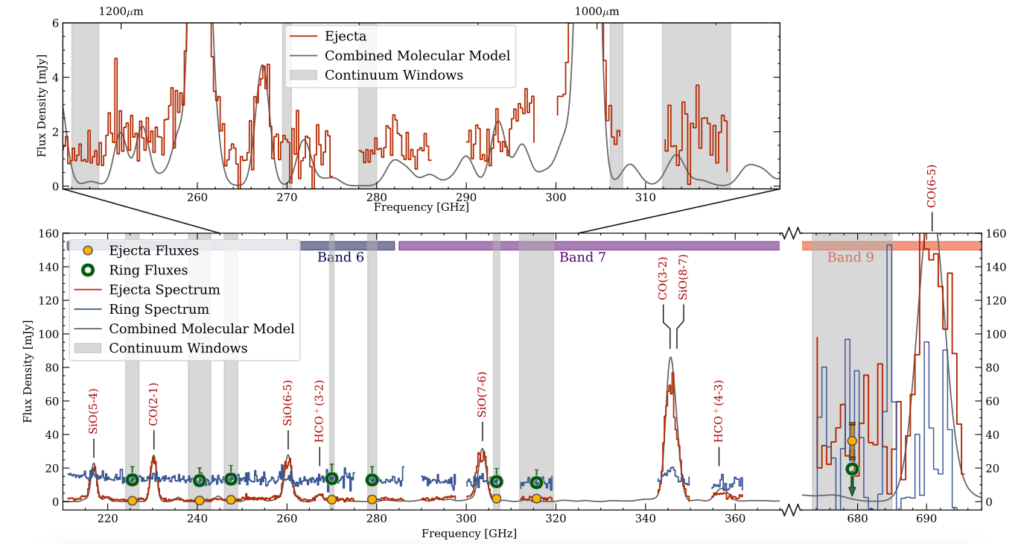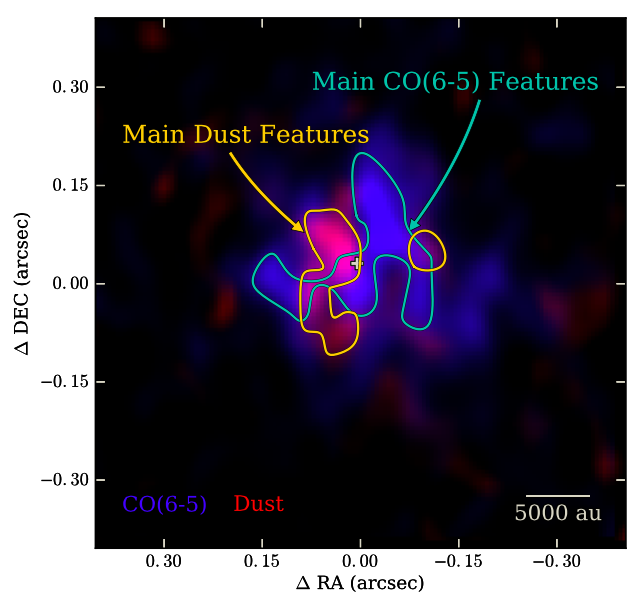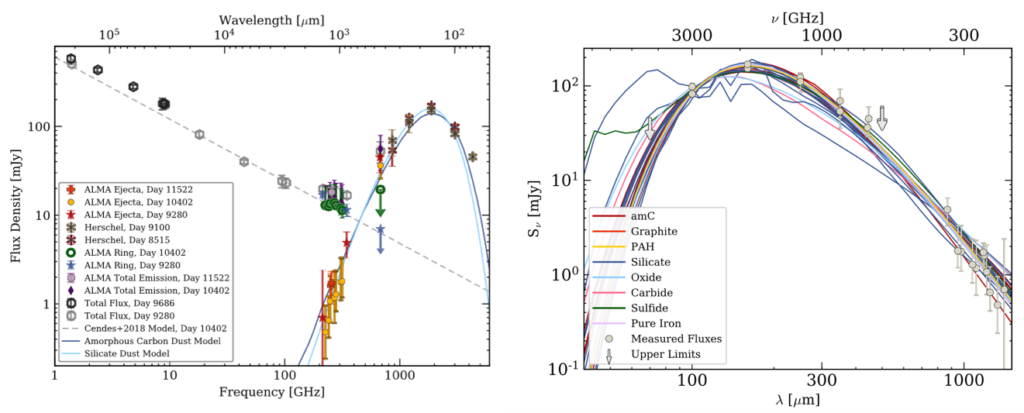Title: High angular resolution ALMA images of dust and molecules in the SN 1987A ejecta
Authors: Phil Cigan, Mikako Matsuura, Haley L. Gomez, Remy Indebetouw, Fran Abellán, Michael Gabler, Anita Richards, Dennis Alp, Tim Davis, Hans-Thomas Janka, Jason Spyromilio, M. J. Barlow, David Burrows, Eli Dwek, Claes Fransson, Bryan Gaensler, Josefin Larsson, P. Bouchet, Peter Lundqvist, J. M. Marcaide, C. Y. Ng, Sangwook Park, Pat Roche, Jacco Th. van Loon, J. C. Wheeler, Giovanna Zanardo
First Author’s Institution: School of Physics and Astronomy, Cardiff University, Cardiff, UK
Status: Accepted to the Astrophysical Journal [open access on arXiv]
Supernova 1987A
Three decades ago, astronomers witnessed the closest supernova since Kepler’s Supernova in 1604. Dubbed SN 1987A, this bright stellar explosion remained visible to the naked eye in the Southern Hemisphere for several months. Due to its relative proximity (at least in astronomical terms) in the nearby Large Magellanic Cloud, SN 1987A presented the first chance for modern astronomy to investigate the supernova process in exquisite detail. As a result, it has been continuously monitored by astronomers using telescopes across the electromagnetic spectrum. Today’s astrobite focuses on new radio observations of SN 1987A taken with the Atacama Large Millimeter/submillimeter Array (ALMA).
The general morphology of SN 1987A has been well-studied, revealing a central patch of ejecta material and a bright, distinct equatorial ring. These features are clearly seen in Figure 1. The ring material is comprised of circumstellar (CSM) material and shock-heated dust left over from the progenitor star’s red supergiant phase. Today’s authors focus primarily on the molecular and dust composition of the inner ejecta, which has not yet interacted with surrounding interstellar medium (ISM). This is especially important as emission from gas and dust seen in this inner region of the remnant can be attributed unambiguously to the supernova ejecta itself and not from the swept-up CSM/ISM or unrelated foreground/background material.

Detecting Molecules in SN 1987A
After 9,000 days since the initial explosion, astronomers first detected emission from cold gas toward the ejecta that contained the signatures of newly-formed molecules such as CO, SiO, and HCO+. In fact, recent efforts have used this molecular emission to produce a 3D reconstruction of the inner layers of SN 1987A (see this video from NRAO).
Today’s authors report new ALMA observations that have detected additional spectral line transitions from CO and SiO molecules, as shown in Figure 2. By comparing the intensity of these transitions, they are able to derive important information about the gas density and temperature in these inner regions. Such constraints not only provide insights into the original star itself and the way supernovae create the basic building blocks of planets, but also allow astronomers to test models of young supernovae/supernova remnants. In particular, measurements of the SiO density are important for understanding the amount of dust that is created in the aftermath of the supernova explosion.

In particular, they find a striking spatial anti-correlation between bright dust emission and CO gas, as illustrated in Figure 3. Their analysis finds that this is due to lower CO gas temperatures at the locations of strong dust emission, compared to the surrounding ejecta. Overall, this suggests that the dust is carbon-rich and may have formed via the dissociation of CO, which contrary to previous chemical predictions.

Dust Production in Young Supernova/Supernova Remnants
To better understand the abundance and composition of this newly-formed dust, the authors compile photometric measurements of the continuum in the radio to far infrared (FIR) portion of the electromagnetic spectrum. These measurements reflect thermal dust emission, which provides a sensitive probe of total dust content in the inner ejecta of SN 1987A. The resultant spectral energy distribution (SED) is shown in the left panel of Figure 4.
In order to constrain dust composition, this portion of the SED was then fit with over 20 different dust models. These models assumed that dust particles were comprised of a variety of different combinations of minerals including silicates, amorphous carbons, carbides, oxides, and sulfides. The right panel of Figure 4 shows the resulting fits, and the majority of dust models are found to give reasonable fits to the observed flux densities with typical dust temperatures ranging between 18-23 K.

However, after considering the total mass of available metals that are predicted to be ejected from the progenitor star responsible for SN 1987A, several grain models and compositions for the ejecta dust are ruled out. The possible range of dust masses in the ejecta are found to between 0.2-0.4 M⊙ for pure carbon or Si grains, or a total of <0.7 M⊙ for grains with mixed compositions. Overall, the authors suggest that mixtures of dust species, including silicates and carbonaceous grains are needed to explain the observed continuum SED, molecular line analysis, and nucleosynthesis model yields.
As it is an outstanding question whether or not supernovae are net dust producers or destroyers on galaxy scales, these new observations of SN 1987A provide crucial constraints on the composition and total mass of newly-formed dust. And as we can study supernova evolution on timescales on the order of decades, rather than centuries, SN 1987A will certainly remain a important interstellar laboratory for understanding the production and destruction of cosmic dust.
